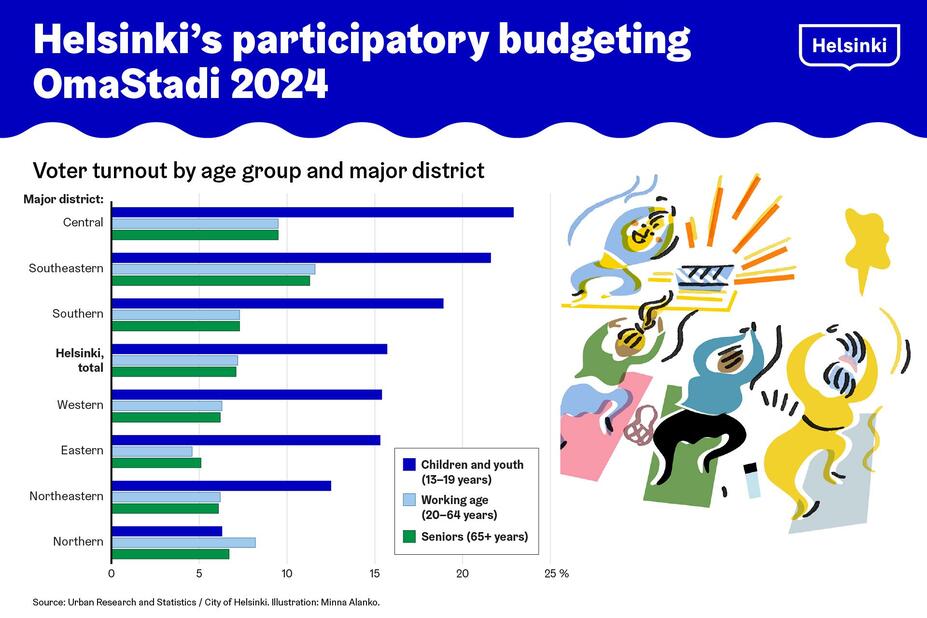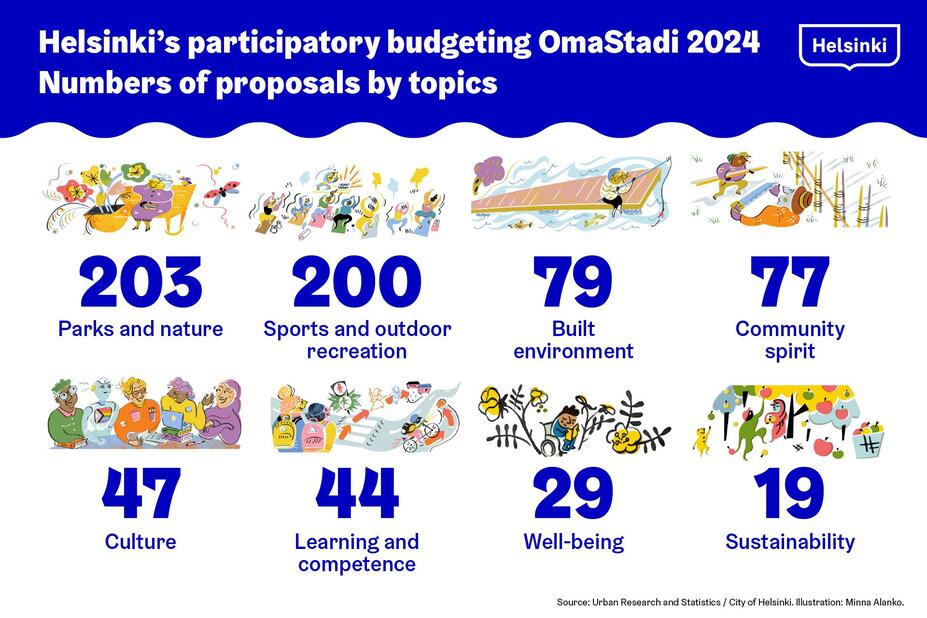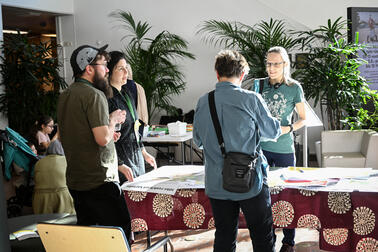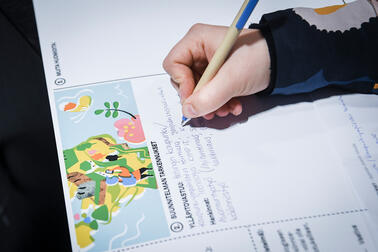
In the spring, voters cast a total of 188,761 votes for the residents' proposals, 45 of which were voted to be implemented. The third round of participatory budgeting is underway in Helsinki. It has progressed to the stage where successful proposals are implemented.
Comprehensive school-age children were the most active age group to participate in voting. More than a quarter of them (29%) exercised their voting rights on participatory budgeting. The next highest voter turnout was people aged 30–49 (8.7%). The voter turnout was lower for residents of Helsinki aged 75 and above (2.0%). Voter turnout varied across major districts, ranging from 5.1% in the Eastern Major District and Östersundom to 11.3% in the Southeastern Major District.
“OmaStadi seems to be a good way to participate, especially for young people who cannot vote in national elections, for example,” says researcher Jenni Erjansola.
Jenni Erjansola, Research publication: City of Helsinki Participatory Budgeting Vote 2024 (pdf, in Finnish)

The City of Helsinki wants to improve its residents opportunities to influence its development
Voting activity among comprehensive school-aged children has been strongest in all three rounds of OmaStadi. Voting activity among young people improved even further in the spring vote.
The number of assisted voters at the city's service points increased compared to the second round. A significant proportion of them were elderly residents. Voter turnout was again the lowest among residents aged 75 and above.
Overall, compared to the previous vote in 2021, turnout in OmaStadi decreased by one percentage point during the spring. This was due to the fact that working-aged people did not vote as actively as they did last time.
“After three rounds, citizens have been able to influence how the city spends 22 million euros to improve comfort. Each major district in Helsinki already has several projects created with OmaStadi funding, which were originally suggestions from residents,” says Development Manager Kirsi Verkka.

Parks and nature, as well as outdoor activities and exercise, were once again the most popular topics
Among various themes, proposals related to parks and nature were the most popular, garnering 32% of all votes. Outdoor activities and exercise were almost as popular, with 31% of the votes.
These two themes were clearly the most popular in all three rounds of OmaStadi. The proposals that received the most votes were related to the cleanliness of the environment, the greenery of the city and sports facilities, for example.
Helsinki aims to provide equal opportunities for residents to participate
One way to influence the city's decision-making is through participatory budgeting. This means that residents can be involved in deciding on the use of public funds with a certain amount of money earmarked for a specific purpose.
In Helsinki’s participatory budgeting, residents prepare proposals in OmaStadi and vote on what 8.8 million euros will be spent on. Residents' proposals have been voted on three times in OmaStadi in 2019, 2021 and 2024.
Next time, Helsinki residents will be able to come up with proposals when the schedule of the fourth round in OmaStadi is confirmed.


